Abstract
OBJECTIVE: To determine Pap smear screening rates among urban First Nations women in British Columbia; to identify facilitators and barriers; and to develop, implement, and evaluate specific interventions to improve Pap smear screening in Vancouver. DESIGN: Computer records of band membership lists and the Cervical Cytology Screening Program registry were compared to determine screening rates; personal interviews and community meetings identified facilitators and barriers to urban screening programs. A community advisory committee and the project team collaborated on developing specific interventions. SETTING AND PARTICIPANTS: Purposive sample of British Columbia First Nations women, focusing on women living in Vancouver. INTERVENTIONS: Poster, art card, and follow-up pamphlet campaign; articles in First Nations community papers; community meetings; and Pap smear screening clinics for First Nations women. MAIN OUTCOME MEASURES: Pap smear screening rates among BC First Nations women according to residence and reasons for not receiving Pap smears. RESULTS: Pap smear screening rates were substantially lower among First Nations women than among other British Columbia women; older women had even lower rates. No clear differences were found among First Nations women residing on reserves, residing in Vancouver, or residing off reserves elsewhere in British Columbia. Facilitators and barriers to screening were similar among women residing on reserves and in Vancouver. Many First Nations women are greatly affected by health care providers' attitudes, abilities to provide clear information, and abilities to establish trusting relationships. CONCLUSIONS: Family physicians are an important source of information and motivation for Pap smear screening among First Nations women.
Full text
PDF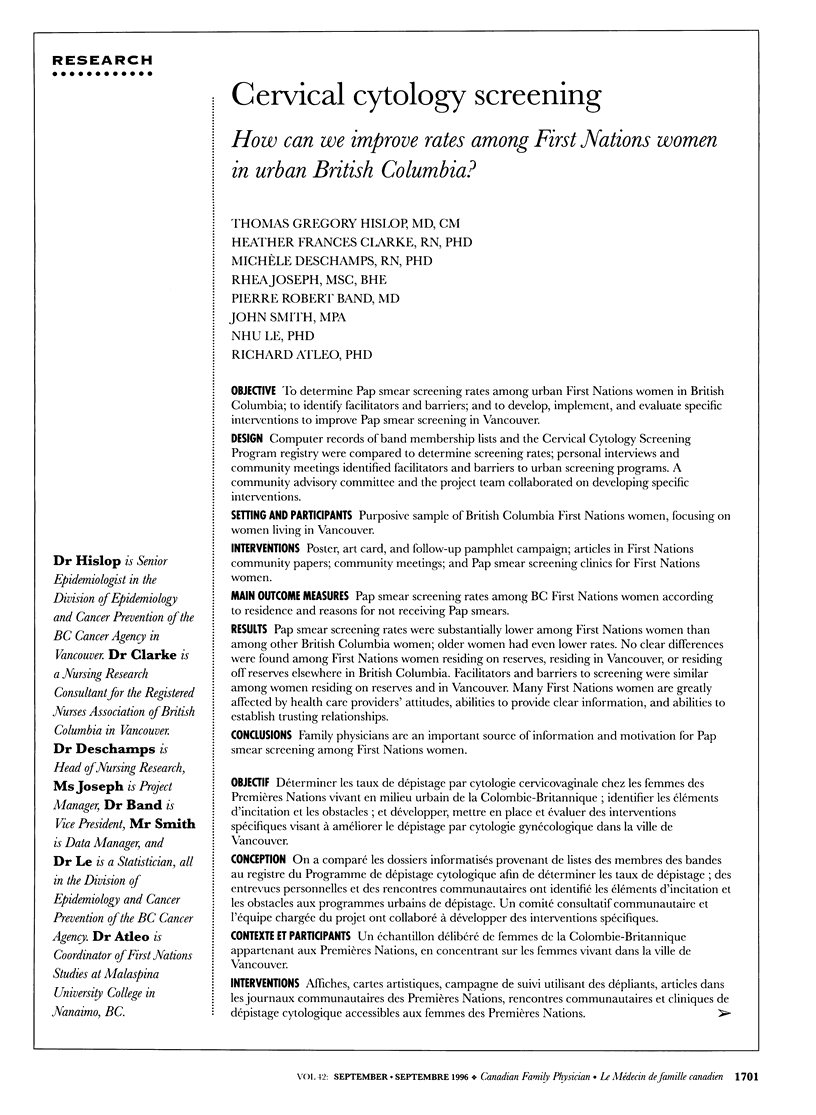


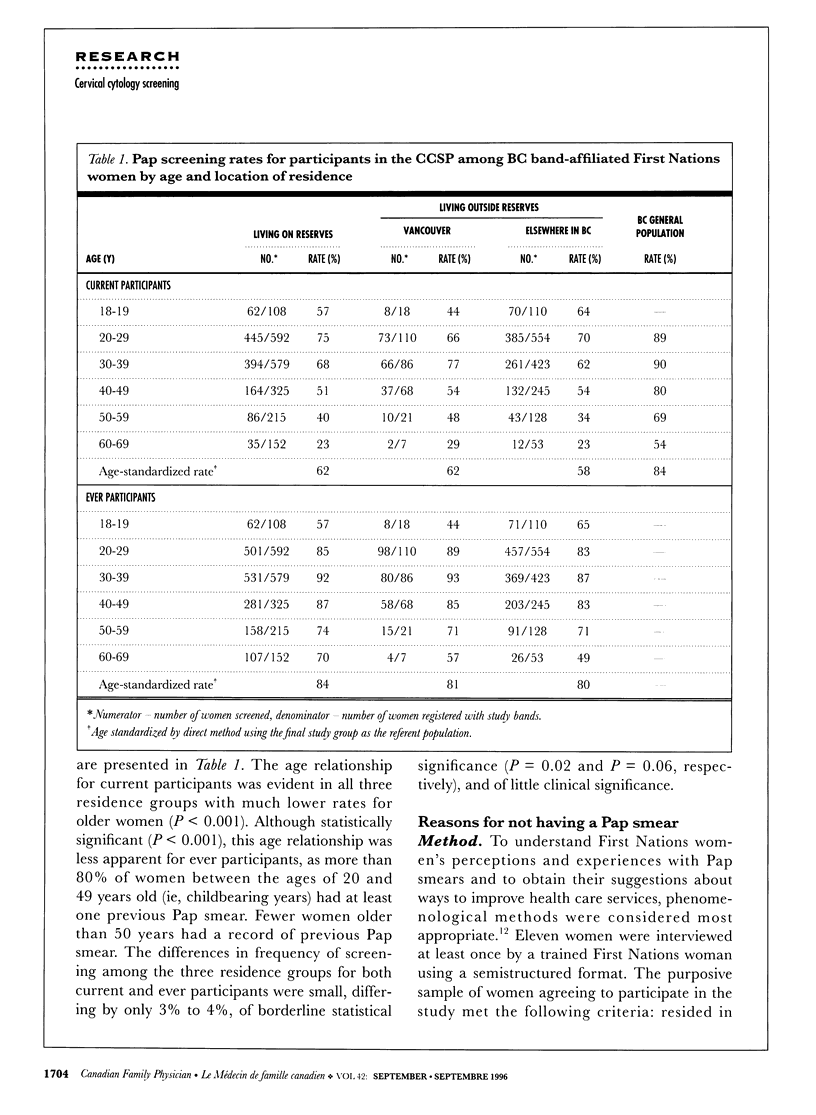
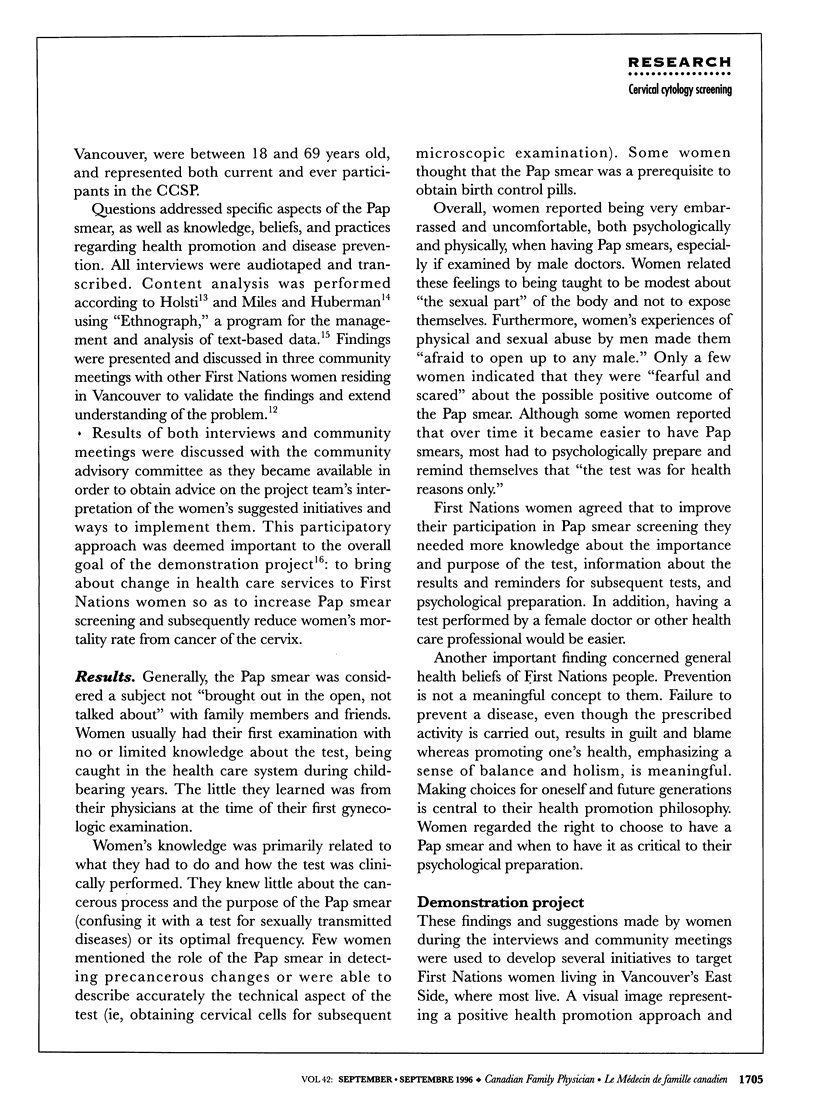
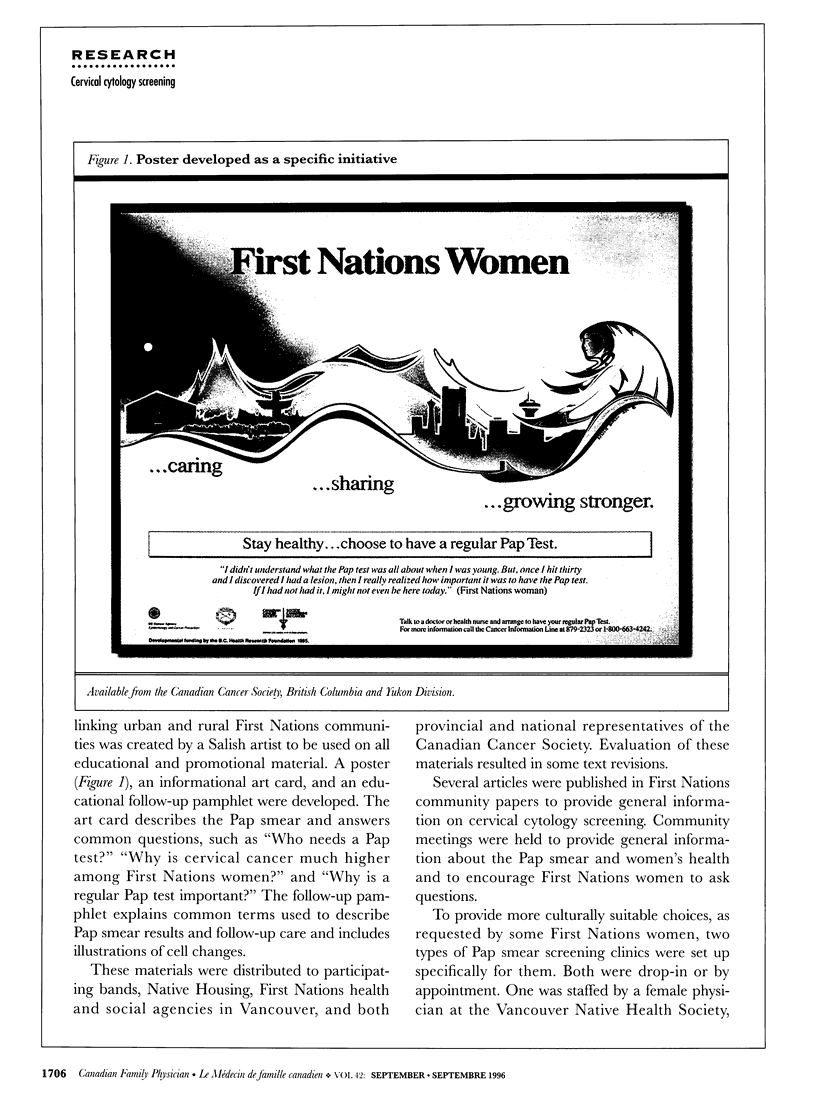
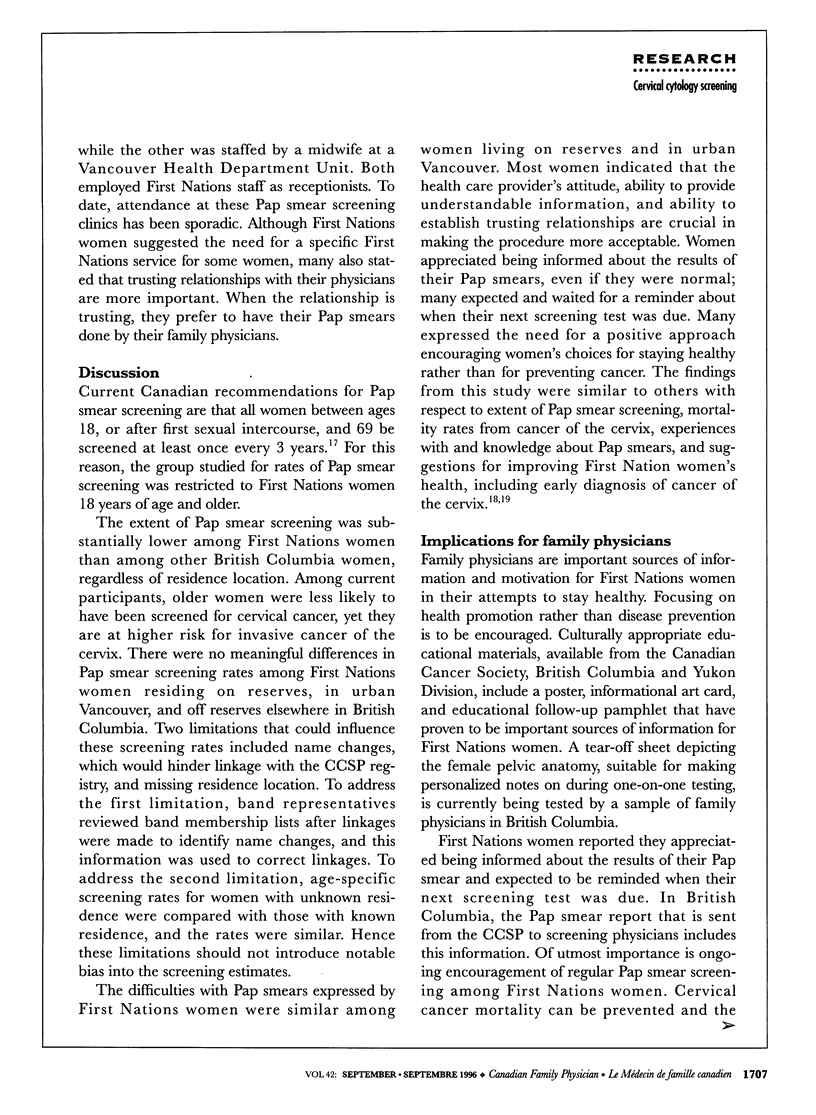
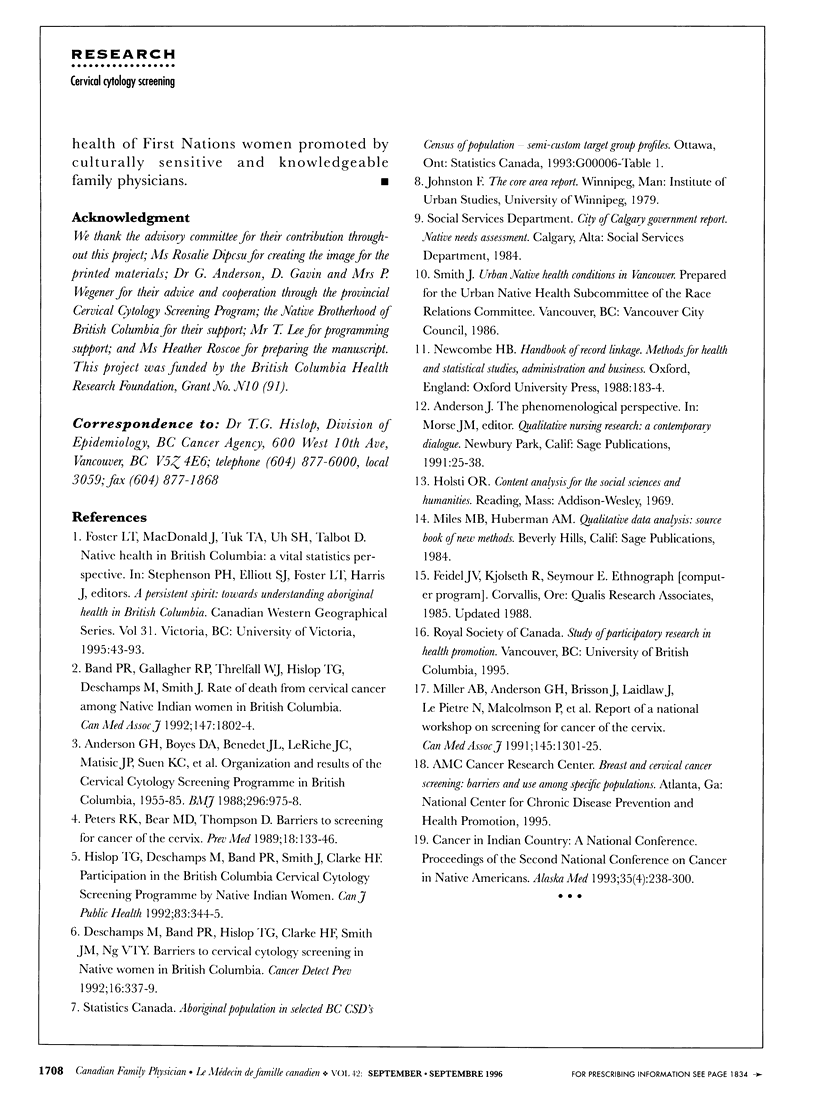
Selected References
These references are in PubMed. This may not be the complete list of references from this article.
- Anderson G. H., Boyes D. A., Benedet J. L., Le Riche J. C., Matisic J. P., Suen K. C., Worth A. J., Millner A., Bennett O. M. Organisation and results of the cervical cytology screening programme in British Columbia, 1955-85. Br Med J (Clin Res Ed) 1988 Apr 2;296(6627):975–978. doi: 10.1136/bmj.296.6627.975. [DOI] [PMC free article] [PubMed] [Google Scholar]
- Band P. R., Gallagher R. P., Threlfall W. J., Hislop T. G., Deschamps M., Smith J. Rate of death from cervical cancer among native Indian women in British Columbia. CMAJ. 1992 Dec 15;147(12):1802–1804. [PMC free article] [PubMed] [Google Scholar]
- Deschamps M., Band P. R., Hislop T. G., Clarke H. F., Smith J. M., To Yee Ng V. Barriers to cervical cytology screening in native women in British Columbia. Cancer Detect Prev. 1992;16(5-6):337–339. [PubMed] [Google Scholar]
- Hislop T. G., Deschamps M., Band P. R., Smith J. M., Clarke H. F. Participation in the British Columbia Cervical Cytology Screening Programme by Native Indian women. Can J Public Health. 1992 Sep-Oct;83(5):344–345. [PubMed] [Google Scholar]
- Miller A. B., Anderson G., Brisson J., Laidlaw J., Le Pitre N., Malcolmson P., Mirwaldt P., Stuart G., Sullivan W. Report of a National Workshop on Screening for Cancer of the Cervix. CMAJ. 1991 Nov 15;145(10):1301–1325. [PMC free article] [PubMed] [Google Scholar]
- Peters R. K., Bear M. B., Thomas D. Barriers to screening for cancer of the cervix. Prev Med. 1989 Jan;18(1):133–146. doi: 10.1016/0091-7435(89)90059-5. [DOI] [PubMed] [Google Scholar]


